- News
- Reviews
- Bikes
- Accessories
- Accessories - misc
- Computer mounts
- Bags
- Bar ends
- Bike bags & cases
- Bottle cages
- Bottles
- Cameras
- Car racks
- Child seats
- Computers
- Glasses
- GPS units
- Helmets
- Lights - front
- Lights - rear
- Lights - sets
- Locks
- Mirrors
- Mudguards
- Racks
- Pumps & CO2 inflators
- Puncture kits
- Reflectives
- Smart watches
- Stands and racks
- Trailers
- Clothing
- Components
- Bar tape & grips
- Bottom brackets
- Brake & gear cables
- Brake & STI levers
- Brake pads & spares
- Brakes
- Cassettes & freewheels
- Chains
- Chainsets & chainrings
- Derailleurs - front
- Derailleurs - rear
- Forks
- Gear levers & shifters
- Groupsets
- Handlebars & extensions
- Headsets
- Hubs
- Inner tubes
- Pedals
- Quick releases & skewers
- Saddles
- Seatposts
- Stems
- Wheels
- Tyres
- Health, fitness and nutrition
- Tools and workshop
- Miscellaneous
- Buyers Guides
- Features
- Forum
- Recommends
- Podcast
£163.69
VERDICT:
Budget GPS watch that measures basic data well, but can't deliver the full smartwatch experience
Lightweight
Clear face
Dated, cluttered apps
Poor button layout
Unpredictable syncing
Inadequate battery gauge
Weight:
42g
Contact:
At road.cc every product is thoroughly tested for as long as it takes to get a proper insight into how well it works. Our reviewers are experienced cyclists that we trust to be objective. While we strive to ensure that opinions expressed are backed up by facts, reviews are by their nature an informed opinion, not a definitive verdict. We don't intentionally try to break anything (except locks) but we do try to look for weak points in any design. The overall score is not just an average of the other scores: it reflects both a product's function and value – with value determined by how a product compares with items of similar spec, quality, and price.
What the road.cc scores meanGood scores are more common than bad, because fortunately good products are more common than bad.
- Exceptional
- Excellent
- Very Good
- Good
- Quite good
- Average
- Not so good
- Poor
- Bad
- Appalling
The Sigma iD.TRI promises everything far more expensive multisport smartwatches do. It's a GPS computer with profiles for swimming, cycling and running; it doubles as a wearable to track steps, distance, calories and sleep; you even get a bike mount! But while the wrist-based heart monitor is excellent, the Sigma suffers several design flaws, its pairing/syncing is unpredictable, and the app is dated.
Sigma has been making cycle computers since the 1980s, so you may reasonably expect to find the German company at the forefront of the tech. But while we love the Sigma Rox 12.0 Sport Set GPS, compared to the latest smartwatches from Garmin, Polar and Suunto, the Sigma iD.TRI – a new model – feels stuck in the last century.
It gets off to a good start. Having been frustrated by the inaccuracy of the Suunto 5's optical heart rate monitor – possibly exacerbated by its 66g weight and tendency to slide when sweaty – I was delighted to find the Sigma a wispy 42g.
The flexible strap wraps securely around my wrist and the heart monitor reads correctly. The screen is bigger and clearer than the Suunto's, too – although it's graphically more basic. The setup feels basic too, as the instructions seem rather cheaply translated from German, but operation is straightforward.
In attempting to set the iD.TRI up with Sigma's three (three!) separate platforms, however, things start to go downhill.
Software bloat
Out of the box you're faced with the Sigma Link app, the Sigma Cloud and the Sigma Data Centre. I registered with the Sigma Cloud (activities from the Link app need to be synced to it), and received a registration email in German, which then activated my Sigma account. Finally my German A-level had come in handy. Geh mich!
To date I've still not been able to make the Sigma Data Centre work on iOS, though, or give the watch a firmware update (I get constant reminders of one)... because for that it must be plugged into the Data Centre, via the USB cable.
The iD.TRI paired with my iPhone 7 via Bluetooth initially, but on the second day the connection disappeared and remained uninterested in coming back even though I deleted the app, disconnected the device from my iPhone's Bluetooth, and went back to the start. Two days later the connection reappeared.
Sync without trace
Syncing with the app sometimes happens without needing to tap the watch icon, and other times doesn't – even with 'auto sync' switched on. Whichever way it happens, the Sigma Link app can share activity data with Strava, TrainingPeaks, 2Peak and Komoot (for navigation), which is great.
The bar mount (above) is great too should you not have a wrist available, but not so great is the way the device shares phone notifications and WhatsApp messages. Done well, this can be handy, but on the iD.TRI the message stays there until you press the OK button, and each needs its own press – you can't clear every message with a single press. It's intrusive.
In addition, the vibration that accompanies the message is a bit wasp-in-a-jam-jar, so was relieved to be able to turn that off.
Must tri harder
It's not just the LCD display and graphics that feel a bit 80s retro. The app itself has a basic look and feel compared to Strava, Garmin Connect, Suunto and Polar Flow. The data is all there but clumsily presented, what should be tappable isn't, and it lacks the depth of analysis, activity trends and comparisons the other platforms have.
On the upside, it you link it with Strava there's no real need to use any of it, beyond activating the sync function itself.
Taking control
The iD.TRI has four buttons (no touchscreen) and they're pretty intuitive: top right is OK, top left is back, and the others scroll between screens.
I found the menus simple enough to learn, but the one thing that kept catching me out was having to press top left – instead of top right – to pause or stop an activity. Sigma is going against button layout convention here, as well as just making it more awkward to reach around and hit the stop button with your thumb as you cross the line.
The iD.TRI pairs with sensors just like any other cycling computer, and has ANT+ as well as Bluetooth, which can be useful with older power meters.
Multi-sport profiles
The Sigma has profiles for cycling, running, swimming and one other that you customise, and simplicity is good in this case. Who needs the 80 that Suunto offers really?
There are five possible screens for each activity to scroll through, and you edit each screen in the app according the data fields you want. You can also switch whole screens off altogether if five is too many to scroll through – I found that useful. However, for some reason certain metrics are only available for certain screens. I'm not sure why each screen can't be completely customisable.
Power naps
As a wearable, the Sigma counts steps, sleeping hours and calories – it's down to the individual to decide how useful that is. Great if you sleepwalk competitively, though.
There's no backlight, but it does have a 'smart light' at the bottom of the display, which flashes different colours for various alerts. I would rather have the backlight. The charger (above) is neatly made, though.
Heart rate accuracy
The optical heart rate monitor is great, and no doubt helped by the lightweight casing, flexible strap and snug, secure fit. I compared its data with a Garmin chest strap and GPS head unit over the same 15-mile time trial and, barring a few minor spikes and dropouts (which are to be expected) the average was within a couple of beats. So was the maximum.
> 10 best heart rate monitors for cycling — get useful fitness data
It tends to spike slightly more with running, soaring into the 180s from the 150s an average of once every six minutes or so, but this is still within acceptable accuracy parameters for an optical HRM. Most importantly it resettles fairly quickly after spikes, so only slightly skews the average.
GPS and navigation
The Sigma can't find a satellite signal that quickly, and frequently times out, but always finds one after a couple of attempts. Once up it measures as accurately as a Garmin head unit, and the trace – on a Strava map or in the Sigma app – stays locked to the road within a couple of metres at most.
To use the iD.TRI for navigation you need the Sigma Data Center – which I couldn't access – or the Komoot app. There's no base map, though, so navigation is via arrows and countdowns. It's basic, but it's turn-by-turn rather than breadcrumb.
> 13 best cycling GPS units — get ride data and bike satnav from £50
Impressively, there's an actual barometer for accurate altitude measurement – something only top smartwatches like the Suunto 9 usually have. Cheaper computers usually use GPS for altitude scoring.
Battery
The Sigma iD.TRI doesn't have 'smart' battery management, but that's to be expected at its lower price.
However, I couldn't find a way of getting an actual number on runtime until I was actually in an activity, where battery life can be a data field. It's disappointing to start a ride with 20 percent – especially when the battery bar indicates it's higher than that – and have it expire after 11 miles.
Value
At £164, the Sigma undercuts pretty much every other smartwatch with this level of functionality. The Suunto 5 is £299 (though it's currently discounted to £244), while the Polar Vantage M is £249 and the Garmin Vivoactive 3 is £199.
Although impressive on paper, sports are done in the real world (while very little is still done on paper...) and Sigma hasn't quite got everything right with the iD.TRI.
It makes a good starter smartwatch as its data recording is very good, but connectivity is unreliable, the app is unattractive and there are elements – such as button layout, battery monitoring, phone notifications and the lack of a backlight – that need refining or redesigning if this watch is to truly be a success.
Verdict
Budget GPS watch measures basic data well, but can't deliver the full smartwatch experience
road.cc test report
Make and model: Sigma iD.TRI triathlon watch
Size tested: n/a
Tell us what the product is for and who it's aimed at. What do the manufacturers say about it? How does that compare to your own feelings about it?
Sigma says: "Are triathlons your passion? Then the iD.TRI is what you need! The iD.TRI combines a smart training system, competition planner, and simple operation to help in your path to success. The iD.TRI measures relevant information for triathletes without overwhelming the user with unnecessary data. Easily create workouts, navigate new training routes, and analyze your data to get more out of your training. All of this makes the iD.TRI the ideal sports watch for triathletes, from beginner to professional."
Tell us some more about the technical aspects of the product?
From Amazon's description:
* Special algorithms for swimming, cycling and running, innovative bike mount, workouts, competition mode and planners, up to six training views, target zone training
* Smart features - innovative features such as smart light, smart notifications, crash alert, activity tracking and sleep analysis, weather trend, and exchangeable silicone wrist strap
* Easy navigation - the Komoot smart phone app shows the turn-by-turn Instructions of the route on the watch, and the routes can be transferred directly to the watch via track navigation
* State of the art technology - GPS, Bluetooth Smart, ANT+, .fit format, barometric altitude measurement, compass, pulse measurement on the wrist and optional chest strap, free planning and evaluation software, waterproof up to 50 meters
In the box: ID. Tri, snap-on bike mount, micro USB charging cable.
Rate the product for quality of construction:
8/10
Fine. It has a lightweight (slightly plasticky) feel, but it's well made.
Rate the product for performance:
7/10
A mixed bag that can't really be summed up here – see the review!
Rate the product for durability:
8/10
Good – the glass screen remains scratch-free.
Rate the product for weight (if applicable)
9/10
Good and light, which helps the optical heart rate monitor stay in place.
Rate the product for comfort (if applicable)
9/10
Great – fit and forget.
Rate the product for value:
5/10
The price is low, but the watch underperforms in some areas, so the value averages out as middling.
Tell us how the product performed overall when used for its designed purpose
Reasonably well. The Sigma iD.TRI is good at measuring and recording, but it's let down by unpredictable connectivity and syncing, a dated look and feel, and some frustrating design.
Tell us what you particularly liked about the product
The accuracy of the optical heart rate monitor, its low weight, and the low price.
Tell us what you particularly disliked about the product
The dated look and feel, weak connectivity with the app, poor button layout and the lack of detailed battery information.
How does the price compare to that of similar products in the market, including ones recently tested on road.cc?
The Suunto 5 has an SRP of £299 (currently discounted to £244), the Polar Vantage M is £249 and the Garmin Vivoactive 3 is £199. Although of these we've only tested the Suunto 5, the Sigma is priced very low for the spec sheet. Dave recently tested the Honor Watch GPS Pro, though, but that's also more expensive at £249.99 and doesn't sync with Strava or Komoot, unlike the Sigma.
Did you enjoy using the product? Sometimes
Would you consider buying the product? No
Would you recommend the product to a friend? Yes, if they were on a budget, but I would feel obliged to manage their expectations
Use this box to explain your overall score
The Sigma iD.TRI has an impressive spec sheet for a surprisingly low price, and at times is really well executed. For basic data measurement it's great, because the optical heart rate monitor and GPS are reliable, and the watch is easy to read and operate. If this was all it was supposed to do, it would score higher.
However, connectivity and syncing with the app and other Sigma platforms is not as slick as it could be, the look and feel of both watch and app are dated, and some functionality just seems confused. All this drags it down. It's still above average though, and a six.
About the tester
Age: 50
I usually ride: Racer Rosa custom alu My best bike is: Colnago Master Olympic
I've been riding for: Over 20 years I ride: Most days I would class myself as: Expert
I regularly do the following types of riding: time trialling, commuting, touring, club rides, sportives, School run on a tandem













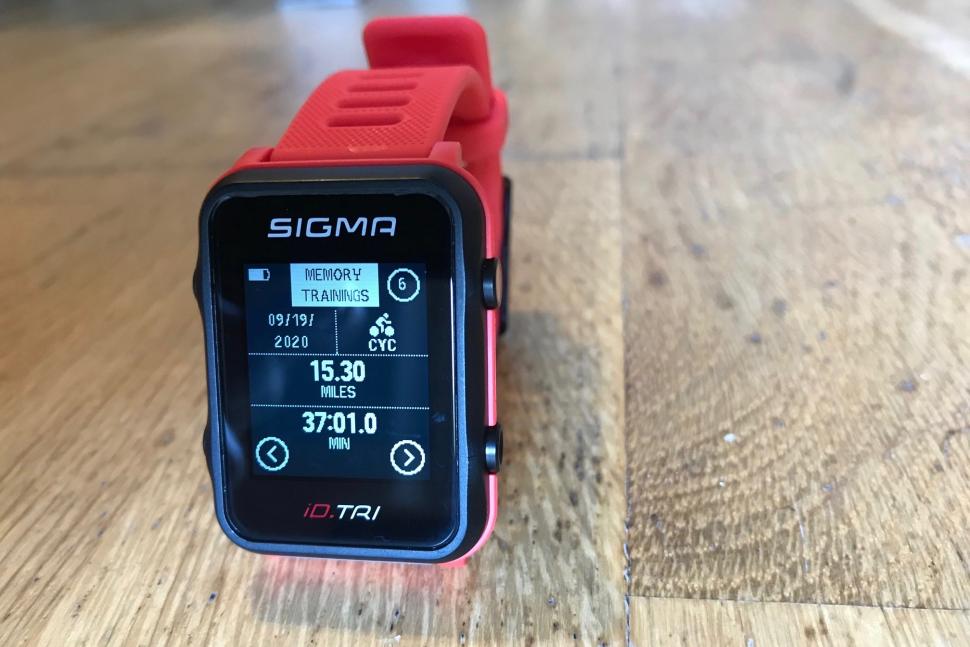
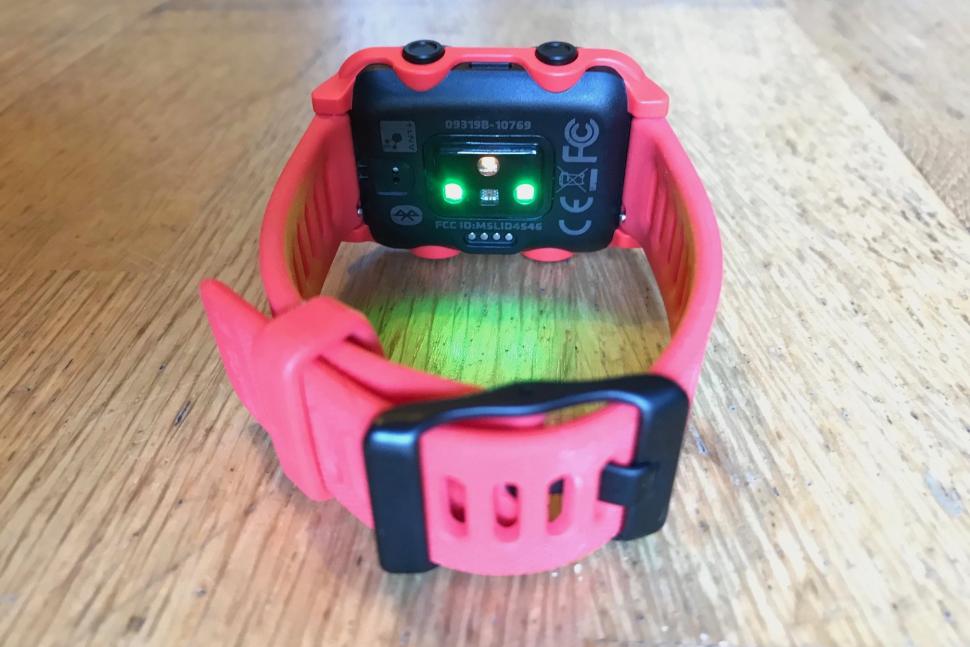





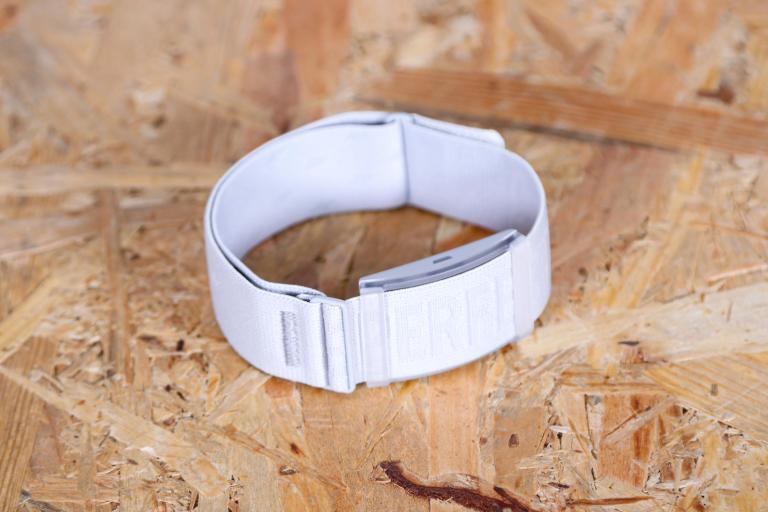
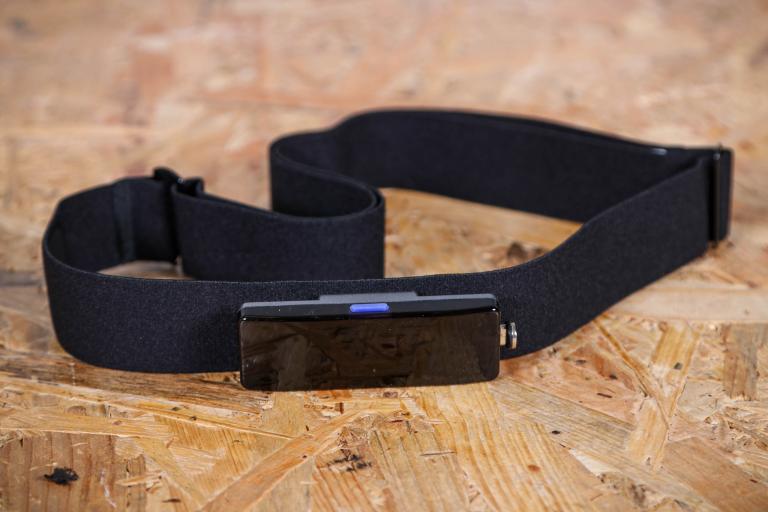
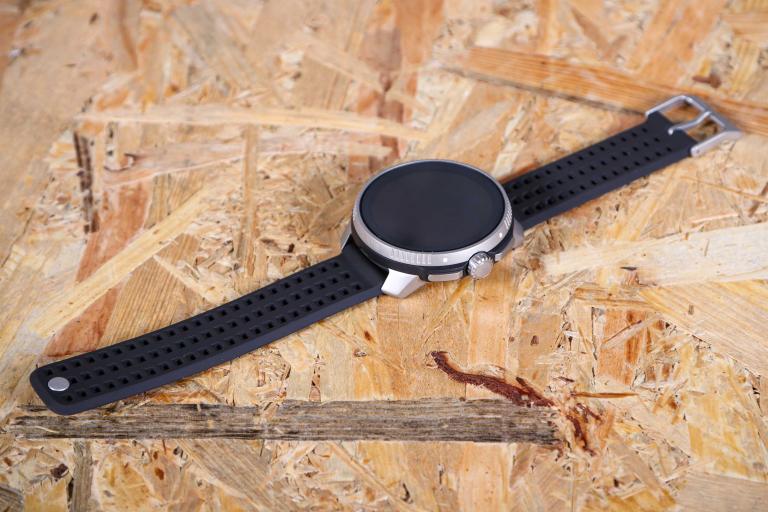
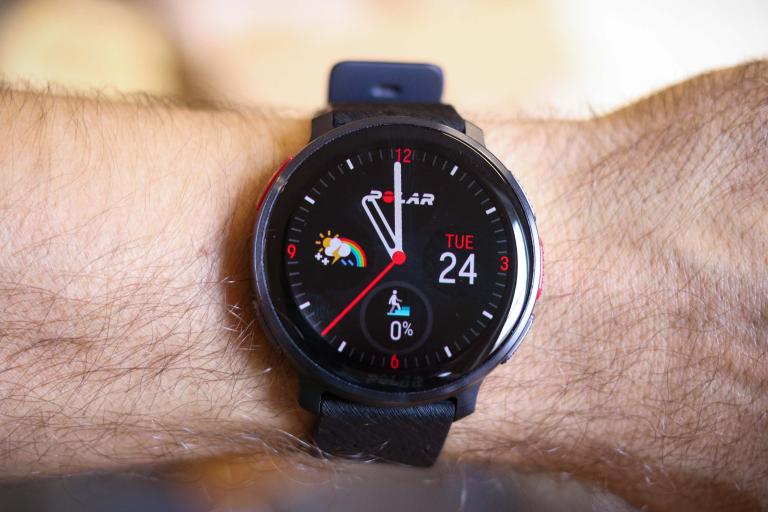
It became a close pass when the driver made the decision to continue an overtake maneouvre even though they no longer had enough space to do so...
Just this week I'd wondered where this was going and had intended to ask if anyone had seen anything pop up about it, but forgot. Hoping the...
Slightly off topic, but $1,161 and $619? WTF? Does anybody know why Australia's fines are not "round" numbers like they are in the rest of the...
it used to be, obviously opinions differ. But the stuff they sold a decade ago, absolutely was very good quality stuff, it felt quality too,and...
That's connected via OBD-II so can't access GPS data, therefore won't help with navigation.
Ahh; the usual issue....
Yeah; read Tom Allen's blog for his thoughts on the difference between Touring & Bikepacking......
Qidi ... was it just me, or did the guys with the system come over as right cocksockets?...
You can see the effect of a 'way too late' opening of this comp, with my dismal results! Wrecked a good start to my season.
It was off my list of helmets worth buying as soon as I saw someone had named it "Game Changer".